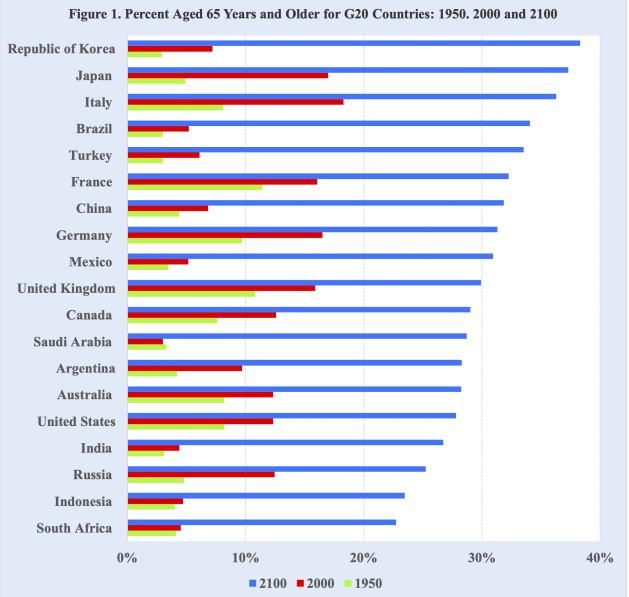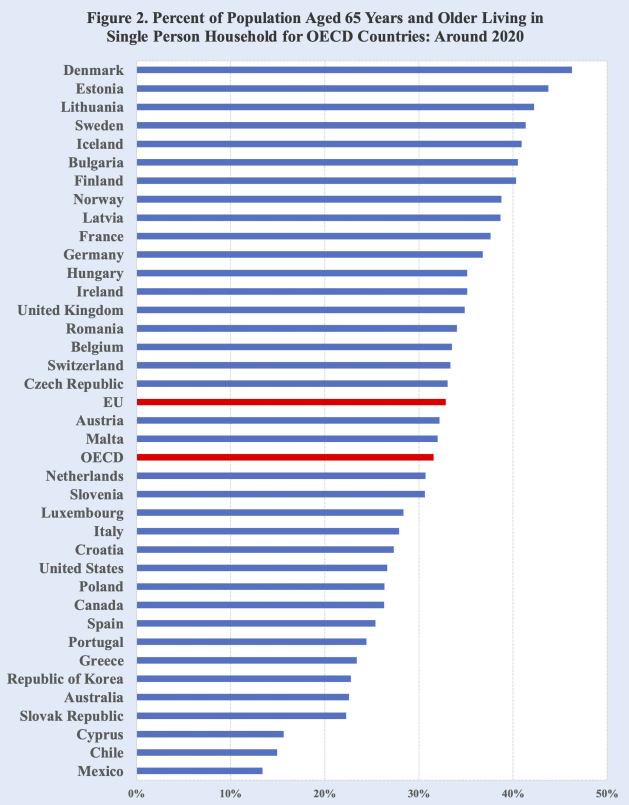Population Ageing: An Inescapable Future

PORTLAND, USA, Jan 05 (IPS) - The ageing of human populations is an inescapable demographic future. That evolving and universal future is increasingly challenging governments and the public, who are by and large ill prepared for that certain future.
Whereas the 20th century was one of record setting rapid population growth with world population nearly quadrupling, the 21st century is one of unprecedented population ageing with its economic, social and political consequences reverberating across countries worldwide.
In addition to influencing the existing world order, population ageing is affecting fundamental aspects of human societies. Among those aspects are economic activities, investments, taxes, budgets, labor forces, politics, defense, education, housing, household structures, transportation, recreation, retirement, pensions, disabilities and healthcare.
Population ageing, which is taking place at a much faster pace than in the past, is basically the result of lower birth rates and increased longevity. While in the 1960s the world’s total fertility rate and life expectancy at birth were 5 births per woman and 50 years, current levels are 2.4 births per woman and 73 years for average life expectancy at birth.
Due to the fundamental changes in the levels of fertility and mortality, the age structure of the world’s population has aged significantly. In the 1960s, for example, the median age of world population was 22 years and the proportion aged 65 years and older was 5 percent; today the median age has increased to 32 years and the elderly are 10 percent of world population.
In addition, the proportion of the elderly aged 80 years and older has tripled since 1960, increasing from about 0.6 to 2 percent and is expected to double to 4 percent by 2050. Increased longevity has also resulted in significantly more centenarians. The number of centenarians is expected to more than quintuple over the coming thirty years, growing from approximately 600 thousand today to 3.2 million by mid-century.
Worldwide the current number of persons aged 65 years and older worldwide is approximately 750 million. That number is expected to more than double over the next three decades, reaching 1.5 billion older persons by 2050. As a result, the world’s proportion of older persons is projected to increase from 10 to 16 percent, or about one of every six people in the world will be in the age group 65 years and older.
At the national level, nearly all the G20 countries, which together account for more than 80 percent of world GDP, 75 percent of global trade and 60 percent of world population, are expected to have no less than one-quarter of their populations aged 65 years and older by 2100. And eight of those countries, including Brazil, China, France, Germany, Italy, Japan and the Republic of Korea, are expected to have one-third or more of their population aged 65 years and older by the close of the century (Figure 1).

Due to the increasing elderly retired population coupled with the relative decline of workers paying taxes and contributing to pension retirement systems, many countries are confronting difficult choices. Governments are being challenged by budgetary allocations, taxation levels, retirement benefits and provision of social and health services, especially for the growing numbers of those aged 65 years and older.
Aiming to avoid controversial budgetary reforms and unpopular tax increases, some governments are reducing expenditures and entitlements for the elderly and shifting more of the costs for support, care giving and health services to the individual and their families. In many instances, however, most households are unable or reluctant to take on the time-consuming responsibilities and considerable costs involved in caring for elderly family members.
The proportion of older persons who live alone has grown steadily over the recent past. Also, those 65 years and older are in the age group that is most likely to live alone. The average proportion of older persons living alone among OECD countries is about 33 percent, with highs of more than 40 percent among some countries, such as Denmark, Estonia, Lithuania and Sweden (Figure 2).

Like the influenza pandemic in the early part of the 20th century, the current COVID-19 pandemic has resulted in declines in life expectancy and significant increases in the numbers of deaths, especially among the elderly and those with health problems.
Although it is difficult to say precisely when the current pandemic will end, international population projections generally expect mortality levels to continue their declines in the coming years resulting in higher life expectancies during the 21st century.
The ageing of populations, especially among the militarily powerful nations, may possibly contribute to efforts to secure world peace. As governments face growing numbers and proportions of their citizens aged 65 years and older, the needs, concerns and perspectives of the elderly men and women may lead to reductions in military expenditures and increased spending on benefits, assistance and care for those in old age.
Given the population ageing of nations, governments need to adopt policies and establish programs to address the growing consequences of population ageing. In doing so, it is important to note that immigration is not a solution to population ageing.
Immigration can certainly increase the size of labor force and significant proportions of the labor forces in many countries are immigrants. However, immigration is not a solution to population ageing because the immigrants also age over time and eventually add their numbers to the retired elderly population.
In contrast, raising the retirement age for government benefits is an effective policy to address population ageing. Raising the retirement age to 70 years would increase the size of the labor force. At the same time, a higher retirement age would also reduce the number of recipients receiving government pension benefits.
The use of robots, artificial intelligence and advanced technology to assist and provide services, information and companionship to the growing numbers of older persons should also be expanded. Such an expansion would that reduce labor demands and costs of providing such care and assistance. Also, it would be more efficient and effective in addressing common health conditions of people in old age.
Public programs are also needed to educate and provide information to people about the need for life-long learning and preparing for retirement, especially developing a savings plan to meet their needs in old age. Such programs should also promote healthy ageing and encourage older persons to keep active and physically fit and remain socially engaged with others.
In sum, governments and the public need to recognize, understand and respond to the ageing of human populations in the 21st century, which is the inescapable demographic future of nations worldwide.
Joseph Chamie is a consulting demographer, a former director of the United Nations Population Division and author of numerous publications on population issues, including his recent book, "Births, Deaths, Migrations and Other Important Population Matters."
© Inter Press Service (2022) — All Rights Reserved. Original source: Inter Press Service
 Global Issues
Global Issues